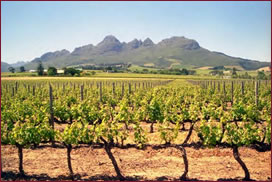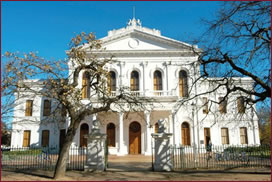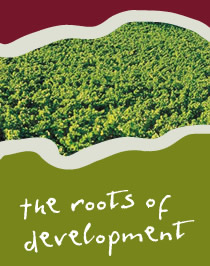Stellenbosch
Click here to view the WEHC 2012 Promotional DVD
History, culture, natural beauty, sport, education and wine have made the name "Stellenbosch" resonate around the world as one of South Africa's premier tourist, wine, business and education attractions.
The recorded history of Stellenbosch dates back to 1679 when the name was given to a small island on the Eerste River by Simon van der Stel, then governor of the Cape. It can, however, be assumed that prior to its official naming, the Stellenbosch surrounds were home to various indigenous communities.
The Eerste River, which today still ripples through Stellenbosch, was so named as this happened to be the First ('Eerste') river the Dutch settlers came upon after leaving their Cape Town base.


After its discovery, Stellenbosch was quickly identified as an area in which to settle, with great potential for agriculture. The surrounding areas proved rich in soil and correct climate for producing vegetables to sustain the ships passing by the Cape of Good Hope en route to the other Dutch colonies in the East. Add to this the thirst of the Dutch and other settlers that necessitated the making of wine and Stellenbosch soon saw its hills and valleys under vines, along with other crops.
With the rich agricultural pickings, the early settlers soon established a bustling town. The earliest building in the Stellenbosch area dates back to 1689 and can still be viewed on the historic wine farm of Muratie. In the town itself, solid, white-plastered buildings arose and the streets were planted with oak trees, giving it the name Eikestad (Town of Oaks), which is still used to describe the town today.
Besides its rapid growth in becoming a centre for the flourishing wine industry, the foundations for Stellenbosch's heritage as an educational centre were established early on, and to this day Stellenbosch University remains an internationally recognized education centre and one of the leading universities on the African continent.
Although Stellenbosch has seen rapid residential and commercial growth over the past few decades, the heart of the town still resonates with an historical atmosphere and cultural allure. The buildings reflect over three centuries of occupation, including Dutch, Georgian and Victorian architecture. A myriad of museums and places of interest are found along the oak-lined streets. And the crests of the dramatically rising mountains that encircle the town – namely the Stellenbosch, Jonkershoek and Simonsberg mountains – are always visible.
Source: Stellenbosch Wine Routes website - www.wineroute.co.za/story.asp
UPDATES
KEY DATES
Congress Opening Session
9 July 2012
Welcome Reception
9 July 2012
Book Launch
10 July 2012
Cultural Evening
11 July 2012






